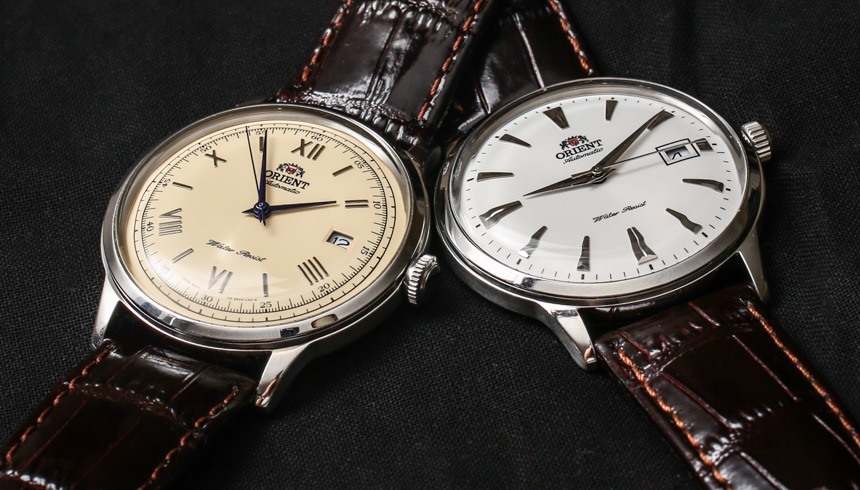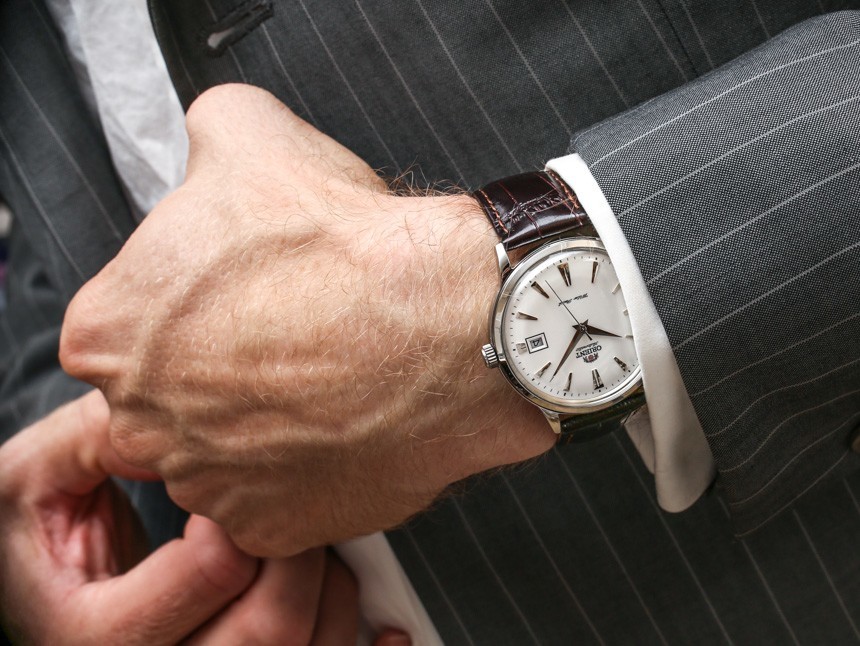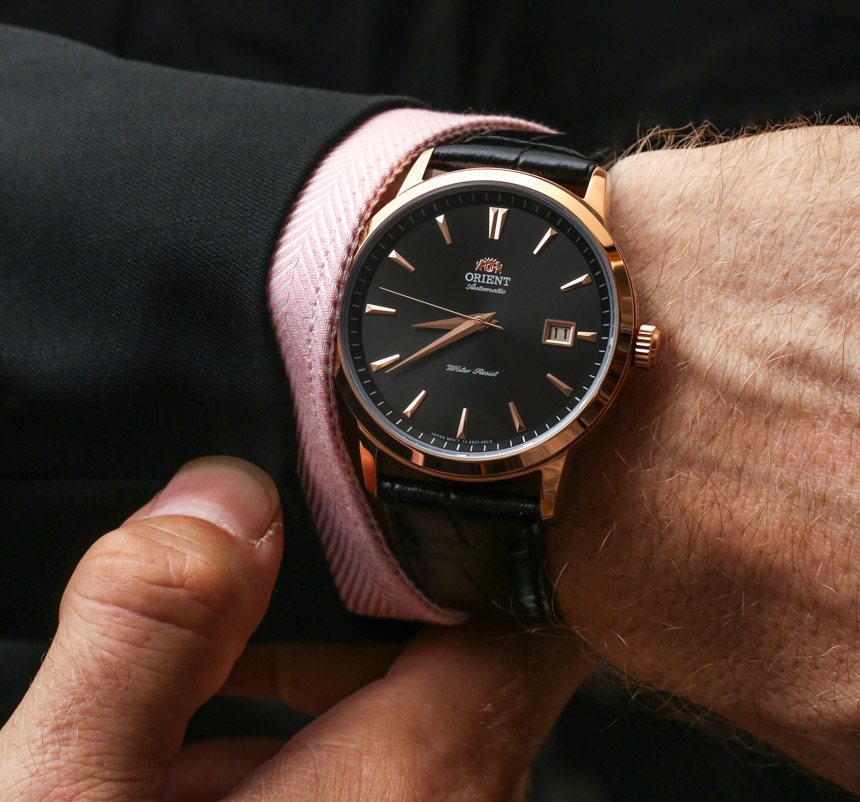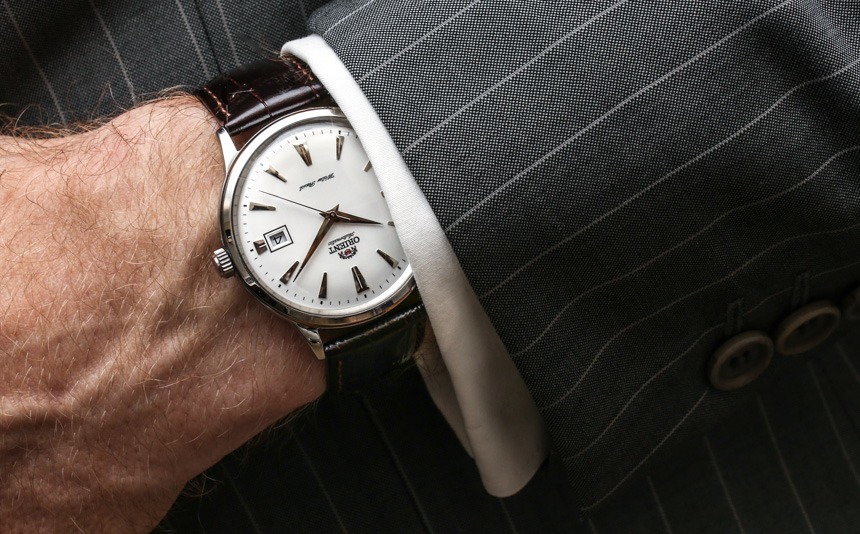
Some believe that the cornerstone of one’s timepiece collection is a fine dress watch. Others, however, may prefer spending their hard-earned cash on rugged sport and tool watches that don’t really work under a shirt cuff. Enter the Orient Watch Company. If you’re a guy who doesn’t wear dress watches all the time, but you’re in a pinch and need a classier option, there aren’t many better options for a dress watch with these requirements, at such an attainable price.
So even if you are a tool watch guy, you will nevertheless inevitably find yourself needing to wear a dress watch once in a while: for a sister’s wedding, a job interview, or accepting an Oscar at the Academy Awards – okay, George Clooney gets his comped by Omega, so never mind. That G-Shock or 18mm thick dive watch isn’t going to cut it with a tux. And while there are dressier quartz watches widely available for reasonable prices, many a true watch lover is turned off by putting on anything but a true mechanical timepiece on their wrist. So, what to do?
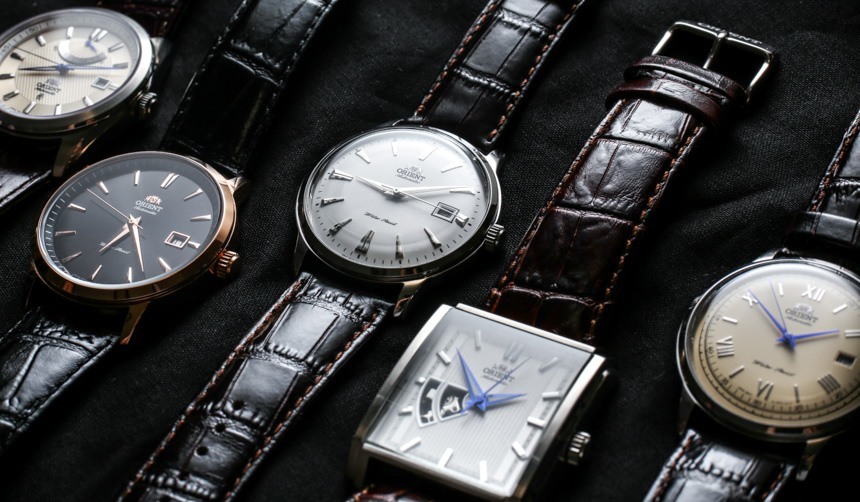
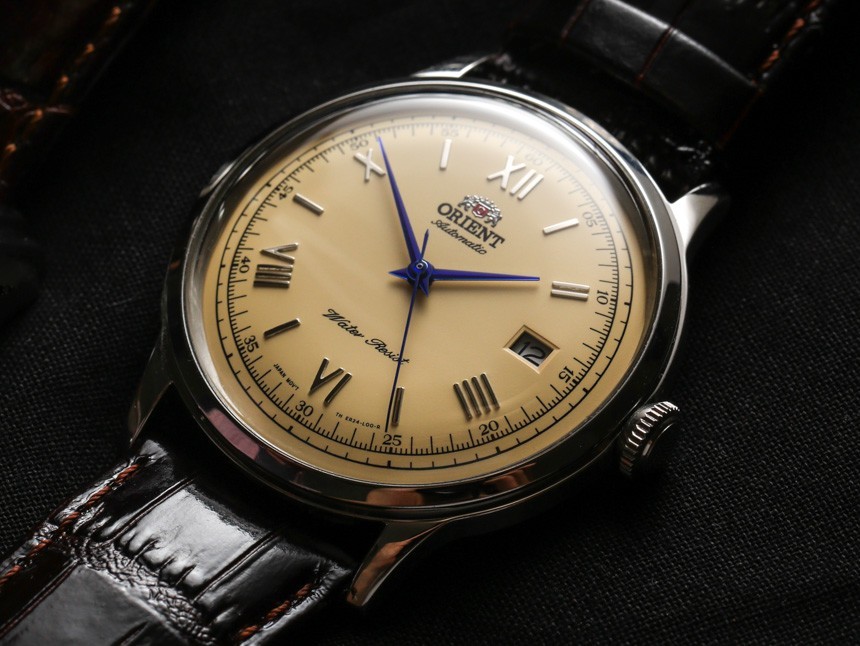
Well, Orient dress watches may offer the best priced entry-level option out there – especially if you want something mechanical. A freestanding subsidiary of Seiko (but with its own history, heritage, and innovations), Orient is Japan’s largest producer of mechanical watches, and a true in-house manufacture. Everything on Orient’s watches – the case, the strap, and especially the robust movements – is created in-house, with typical Japanese quality control despite their affordable price point.
These aren’t Pateks, and aren’t going to fool anyone to thinking they are. Still, Orient dress watches have their own unique charms, from their very Asian design sensibility, to finish and construction that punches above its weight, considering their cost. We’ve taken a look at a few of their dressier models from their current range – from their simplest three-handers to ones with complications and quirkier design aesthetics – and see how they stack up hands-on.
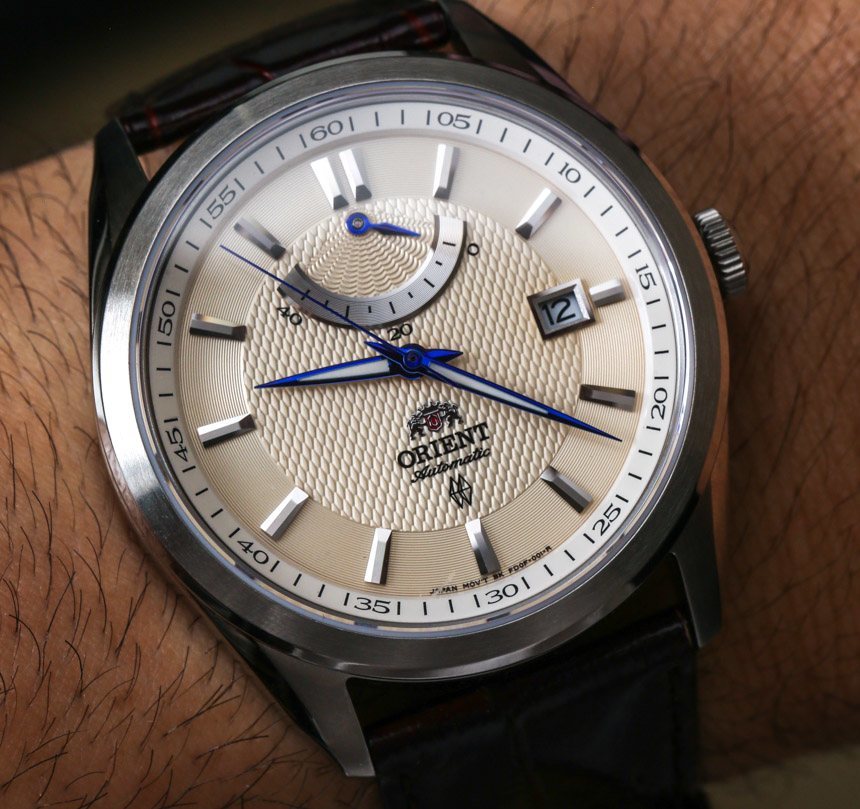
I’ve found Orient is a great way to get your wrist accustomed to the idea of wearing dress watches – whether you need a dress watch for a specific event, or your job, or just want to see what its like to wear one… and they won’t break the bank. Orient always offers a wide selection of dressier options. Meaning that if you are reading this article years from now and these models are no longer available, similar options will be available from Orient’s collection.
So if you’re in a bind and need a dress watch, there’s usually always something from the brand to fit a wide variety of tastes. The Bambino FER24005W0 is Orient’s iconic dress offering. For a retail price just over $260 (with street prices often falling below that number) you get a classic looking, automatic-movement three-hander complicated only by a simple date window at three o’clock. It is probably the go-to automatic dress watch for anyone who needs something in a pinch and doesn’t want a mere throwaway Chinese item.
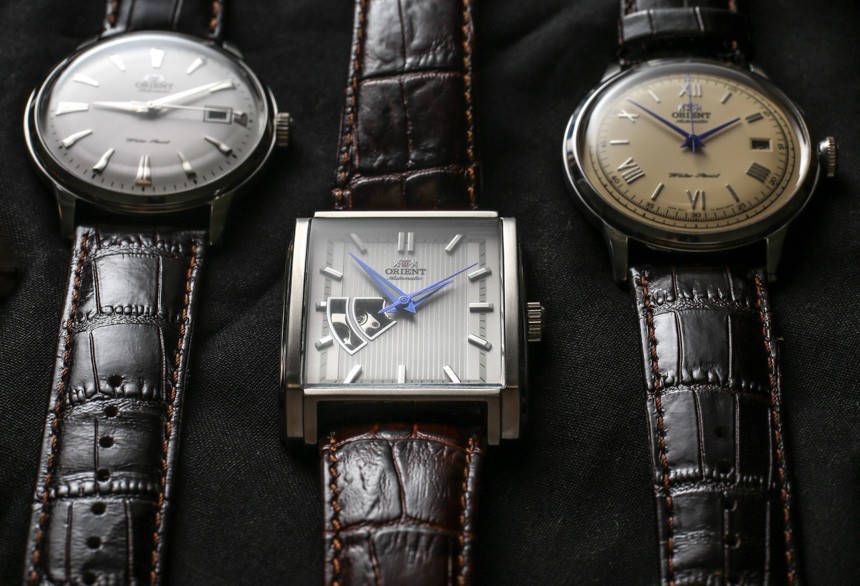
What makes the classic Orient Bambino model great – and for the most part, Orient watches in general – is an attention to detail and quality not typically found at this price point. The Orient Bambino’s Mad Men-worthy retro look and 41mm case diameter make it appealing to contemporary tastes: it feels classy yet not wimpy on the wrist. Its minimal dial, dauphine hands, and sculptural metal indices for hour markers feels modern and classic enough to work in a lot of environments. The period-correct domed crystal – a difficult feature to achieve in an affordable watch – enhances the retro vibe. But the Bambino isn’t the only story when it comes to Orient’s dress offerings.
My favorite of the current crop of Orient dress watches is the recently re-issued and somewhat improved Orient FER2400CN0 (true to its Japanese heritage, Orient watches have expectedly idiosyncratic model names and SKU numbers that provide no end of delight). This is an exceptionally classical variation of the Orient Bambino line: it’s a true, unequivocal dress watch. That’s clear from the roman numerals on the dial and their lack of lume. I enjoy the roman hour markers here not just for their antique anachronism, but also their strong legibility (to me, a crucial component of a successful dress watch). On this dial, the numbers are mirrored steel: they have a sparkle, but take on the color of what they’re reflecting, causing them to come into focus clearly.
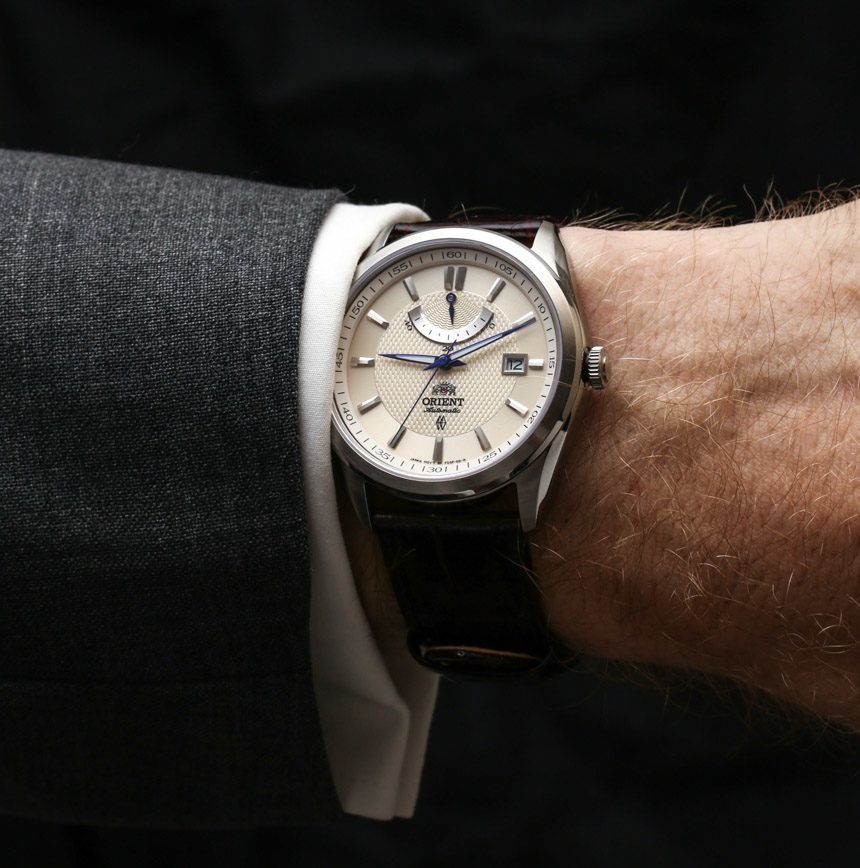
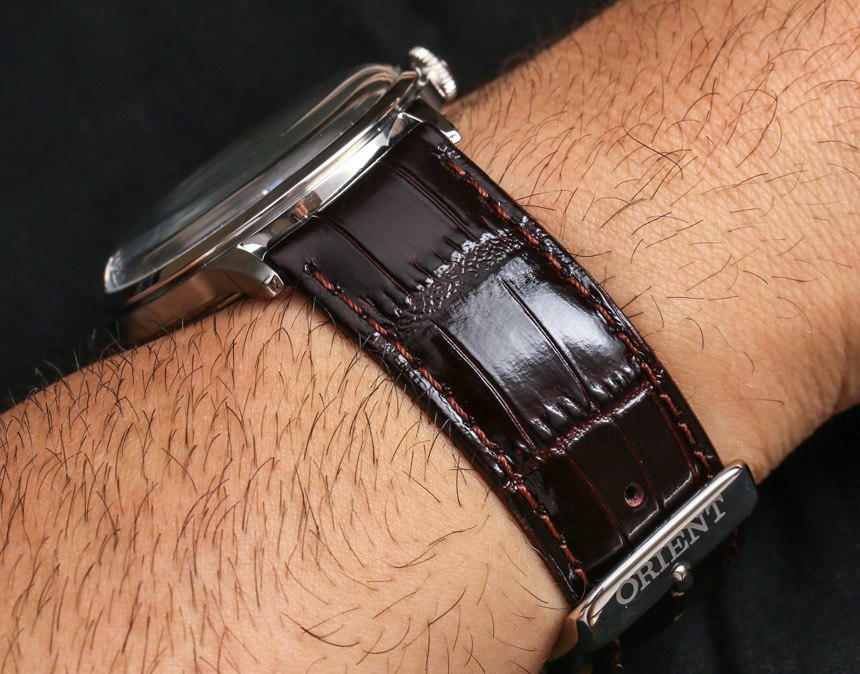
The stock alligator-printed mahogany leather band here feels so much more luxurious than one might expect: padded and lined with supple suede, it feels great against the skin. The refined feel of the mechanism also feels like it comes from a much more expensive timepiece. Setting the hour felt unexpectedly smooth, and the quick-set date turns with a satisfying click; these were joys I looked forward to every time I put the watch on. And oh yeah, all of these watches kept near-perfect time over the many weeks I wore them.
Likewise, the “railroad”-style outer seconds track suggests a more expensive model like a Patek, but without aping it exactly in homage. Another clever design element comes with the second, minute, and hour hands: rendered in a luminous royal blue, they subtly pop against the warmly colored dial, further increasing readability. Here, Orient has made the hands thinner and flatter than those on the typical Orient Bambino model, which makes them appear more elegant. The rich golden cream dial is what I find truly makes this watch special, however. There’s a trend of late for retro-themed watches to have a fake patina; here, the dial doesn’t have a fake patina, but instead the color evokes the memory of an aged watch – a sophisticated nuance, and just one of many. All of these elements coalesce so adroitly, they create a timepiece that may join the traditional Bambino as one of Orient’s iconic, classic models.
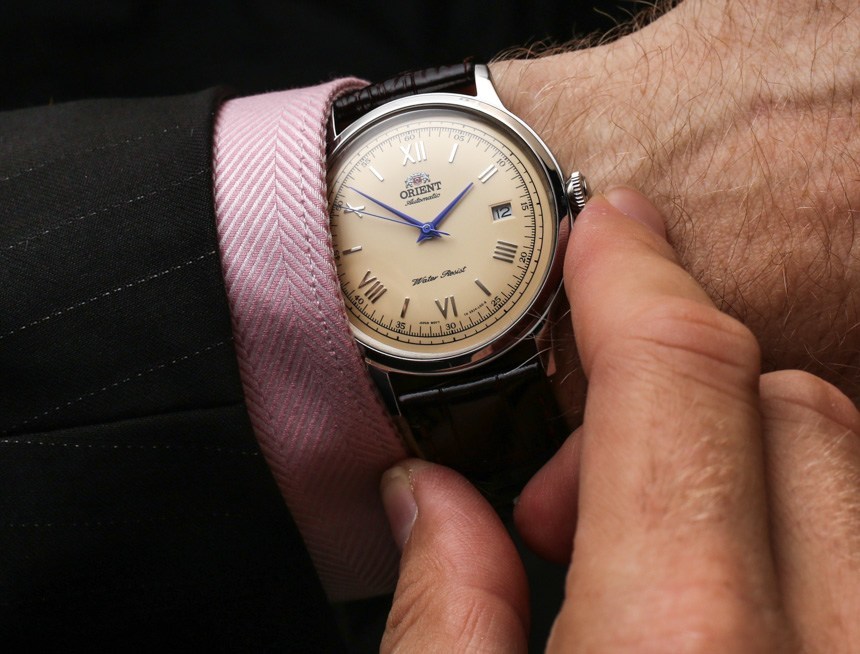
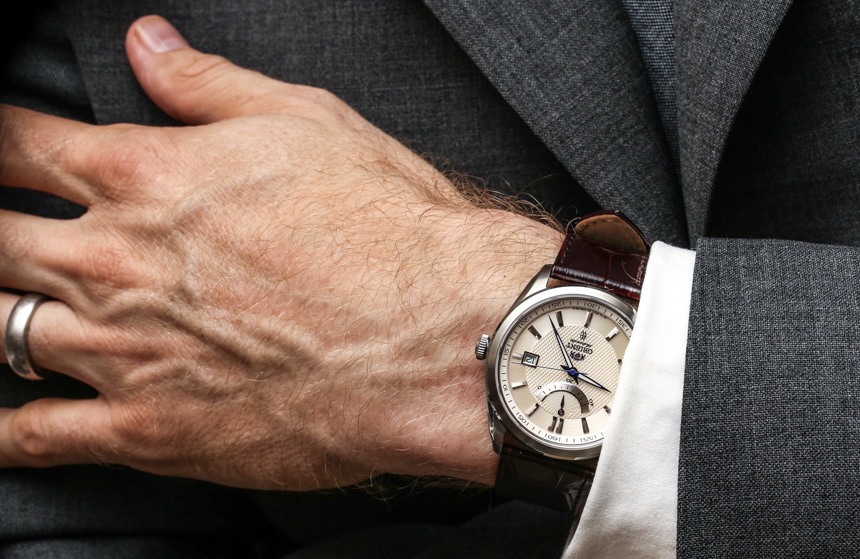
Just Above Is The Orient FFD0F004W0 With A Power Reserve Indicator, While Further Above Is The FER2400CN0 With Applied Roman Numerals
While, to my eyes, the tiny date window at three o’clock on the Orient FER2400CN0 doesn’t detract much from this watch’s near-perfect symmetrical balance, some purists prefer their dress watches to be without complication. Now, many other watch collectors love complications, demand them even – chronographs, moonphases, GMTs and the like; the more basic functionality of dress watches doesn’t appeal much to this crowd. However, one of the most satisfying and useful complications to me is a power-reserve indicator. Orient didn’t invent the power-reserve indicator – Jaeger-LeCoultre gets those bona fides; however, starting in the 1950s, Orient did manage to put them into affordable watches in a way that really none other has achieved.
Watches with power-reserve indicators often cost over $1,000. While Miyota has developed a cheaper mechanism with a power-reserve indicator, Orient’s is a true in-house movement: built on its base 46N45 caliber that’s been well refined over the years, offering 40 hours of charge (as all the models in this review do, in fact). The power-reserve indicator on the Orient FFD0F004W0 here makes it a true bargain at just over $450. Placed unexpectedly at the top of the dial, it both enhances the Orient FFD0F004W0’s elegant symmetry, and also provides functionality not always present in more traditional dress options.
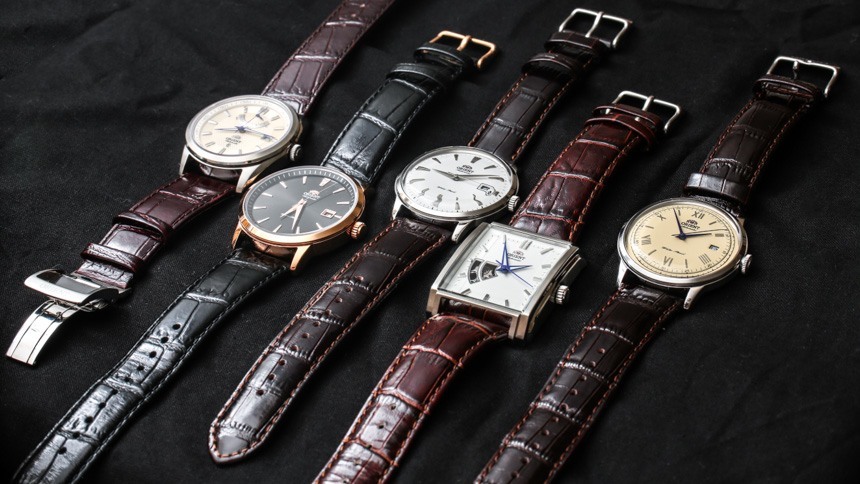
The 40mm case diameter looks contemporary on the wrist, while stopping short of being too big for a dress watch. Likewise, a seconds track adds a slight sporty edge, while not taking away from the refined presentation. Orient wins again with the hands here, too: perfectly proportioned, the blue-and-white dauphine pointers stand out legibly against the play of ridged textures etched into the light cream dial. (The lume is also not bad, and proves a welcome, if slightly untraditional, feature.)
Again, this model has aspects you’d typically find on much more expensive watches – a sapphire crystal and exhibition caseback, and a deployant strap that proves incredibly comfortable and ergonomic. The strap is actually a bit unusual, however: it’s flipped around from the usual deployant style, with the pointed end of the band pointing towards the wearer rather than away.
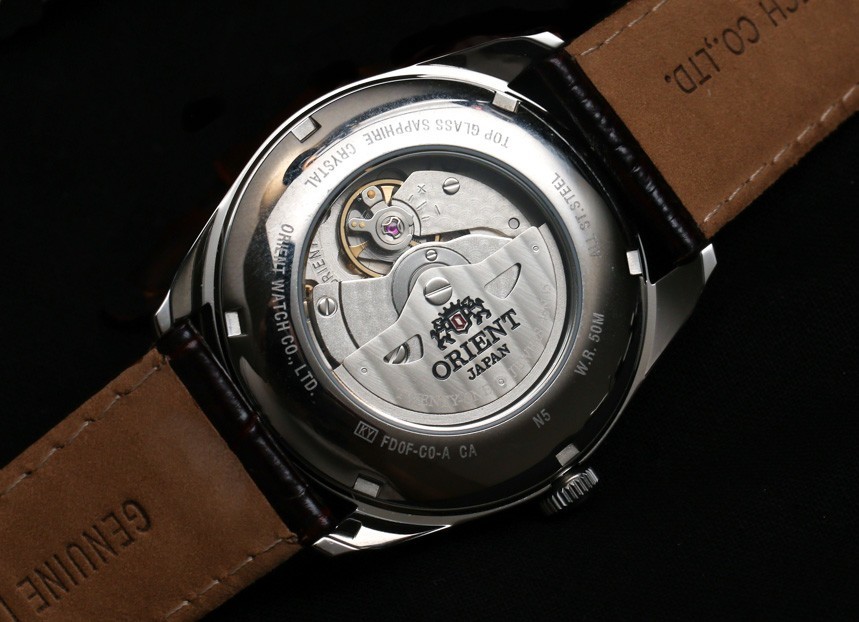
In general, I like how Orient’s affordability allows me to try out styles and trends that have piqued my interest, without having to commit to a more expensive option. Rose gold, for example, is a very “now” choice for case metal. Seeing all the incredible rose gold models rolling out from everyone from Audemars Piguet to Omega, I started wondering what a nice dress watch of that hue would look like on my wrist.
As such, the rose gold Orient Symphony FER27002B0 looked both refined and bold when I wore it, garnering curiosity and compliments from fellow watch nerds rocking Sinns and Speedmasters. The pink index markers against the slightly iridescent deep black dial added both legibility and an elegant look. The black accents made the Orient Symphony something I could wear with a tux or more formal suit; that the date window is beveled in rose gold is a nice detail-oriented, luxe touch. If anything, this Orient Symphony nicely recalls, say, a vintage Rolex Bombe as a design reference; however, the nicely finished 41mm case – which wears even a little bigger with the minimal dial, simple bezel, and polished surfaces – felt suitable for modern tastes.
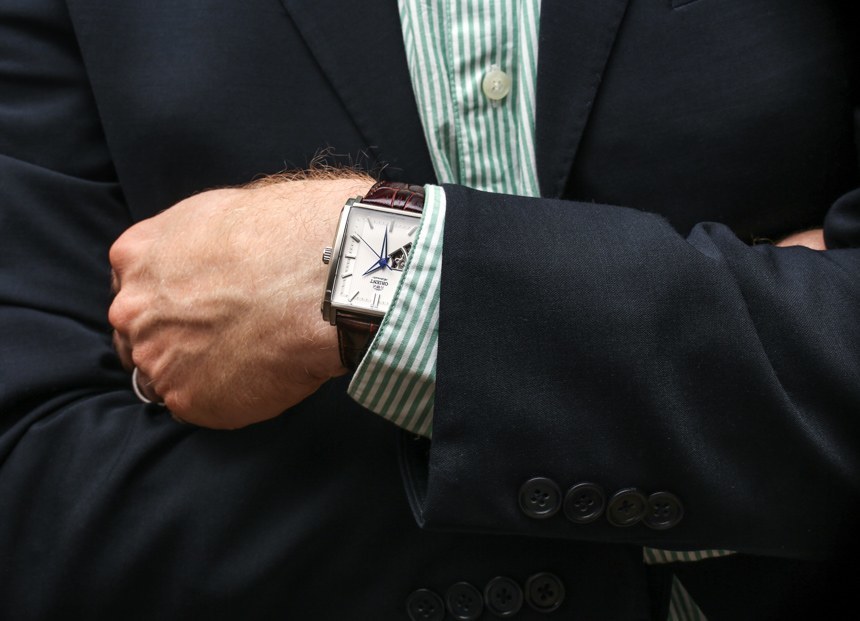
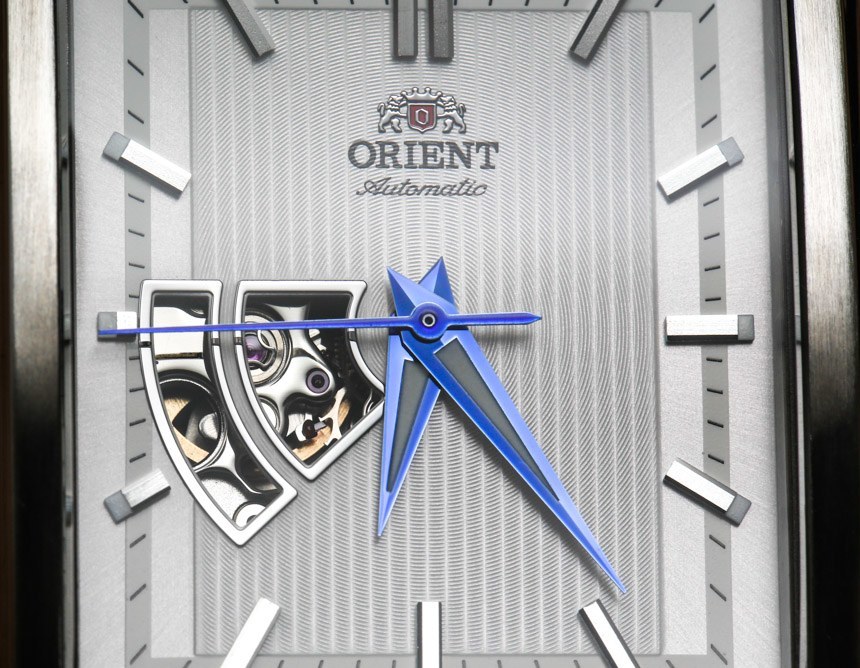
The Orient FDBAD005W0 Features A Square Case And A Skeletonized Dial Showing Parts Of The Orient 46A40 Automatic Movement
Reflecting the price point a little more directly, however, are the crystal and exhibition caseback, which are mineral, not sapphire. What the caseback reveals isn’t a supremely jeweled and striped Breguet movement, either. The workmanlike finish of the mechanism is clearly where costs have been kept down – although, in another surprising and quirky detail, the rotor and other parts have been covered in copper. I liked that touch: it visually complements the movement with the rose gold finish, and adds a touch of industrial chic. It also showed effort and consideration in an area which the watchmaker could have simply blown off at this price point. Then again, you get a lot from this watch, which costs under $250 (!) – less than an eighth of what you’d pay to service a Rolex Cellini!
Similarly, I’ve also become a bit obsessed about acquiring a square watch of late, and I enjoyed seeing how I’d like wearing one with the brand new, just-released Orient FDBAD005W0 model – aka the “Producer.” Now, a lot of guys don’t put a square watch at the top of their want list: it’s considered by many to be a conservative, anachronistic case style. As such, they may admire, and even desire, a Reverso or Tank; pulling the trigger on that $40,000 Vacheron Constantin Toledo 1951 when it’s only going to get worn a few times a year sometimes goes by the wayside when that grail Royal Oak or Daytona comes up at a good price. But in any era, a square watch remains the epitome of a classic, pure dress timepiece, and has an old-school cool that definitely sets the wearer apart. The Producer, however, brings some personality to its geometry.
